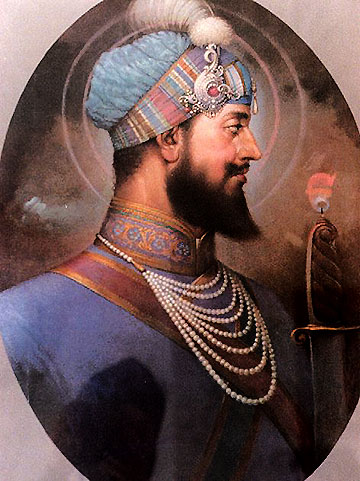|
Sri Guru HarGobind
Ji (The Gurus)
Sahib Guru HarGobind Ji (1595 - 1644) Guru Har Gobind (1595 - 1644) acted as the advice of his father to maintain an army. His father had been a victim of Mughal tyranny. The Mughal rulers wanted to break the power of the Sikhs. He organised a band of soldiers and trained them in warfare. Some historians call it the beginning of military theocracy. Emperor Jahangir felt jealous of the Guru's military power and had him imprisoned in Gwalior fort. When the Guru's release was ordered, he refused to leave the fort till the other Indian princes who was also in jail were released. After this was done the Guru came to be known as Bandhichhor or the Great Liberator. Guru Har Gobind realised that a fight with the Mughal power was inevitable, so he had his small army well trained. He himself was a great rider, hunter and swordsman. Cunningham reports that he had 800 horses, 300 trained horsemen and 60 artillery-men. Guru Har Gobind fought three major battles which were forced on him by the Mughals. The first battle at Amritsar was fought in 1634. The Commander of the Mughals - Mukhlis Khan - was completely routed. In the second battle near Lehra in 1637, the Guru's army was also victorious. The third battle in which Painde Khan got killed was fought at Kartarpur in 1638. The Guru's success in all the three battles created confidence and inspried courage among his Sikhs. Guru Har Gobind's career marks the turning point in Sikh history. Due to the new circumstances, Sikhism was becoming militant. The Guru carried two swords: one of spiritual power - Peeri, and the other of military power - Meeri. The Sikhs had challenged the Mughal power, and has raised the banner of revolt against a cruel and corrupt administration. The martydom of Guru Arjan had not been in vain. The mission of the Sikhs henceforth was for the liberation of people from religious and political typranny. The use of the sword as means of defence and justice became popular among the Guru's followeres. In 1644, Guru Har Gobind nominated Guru Har Rai as his successor. |
